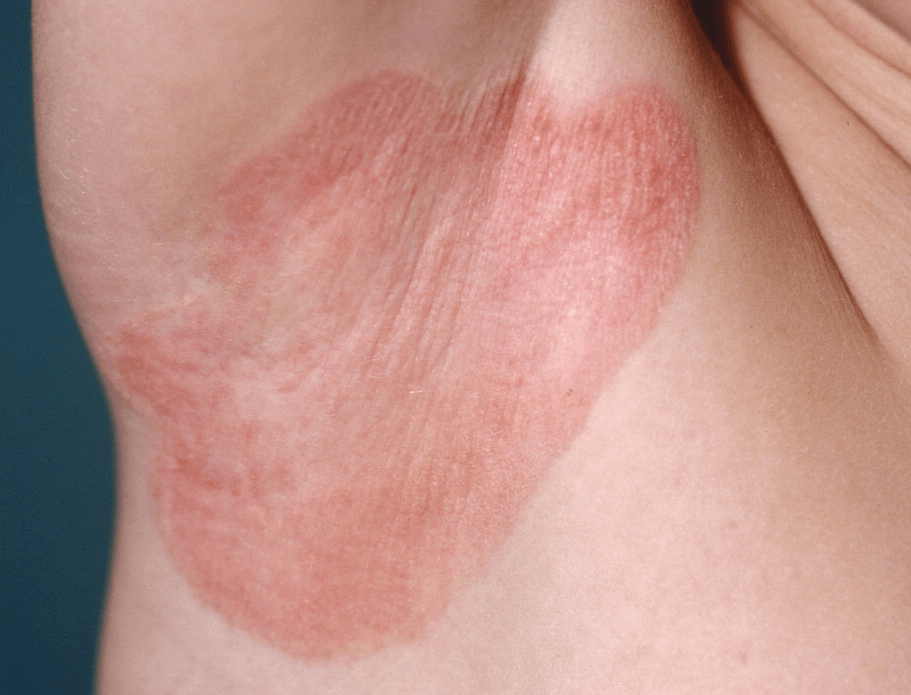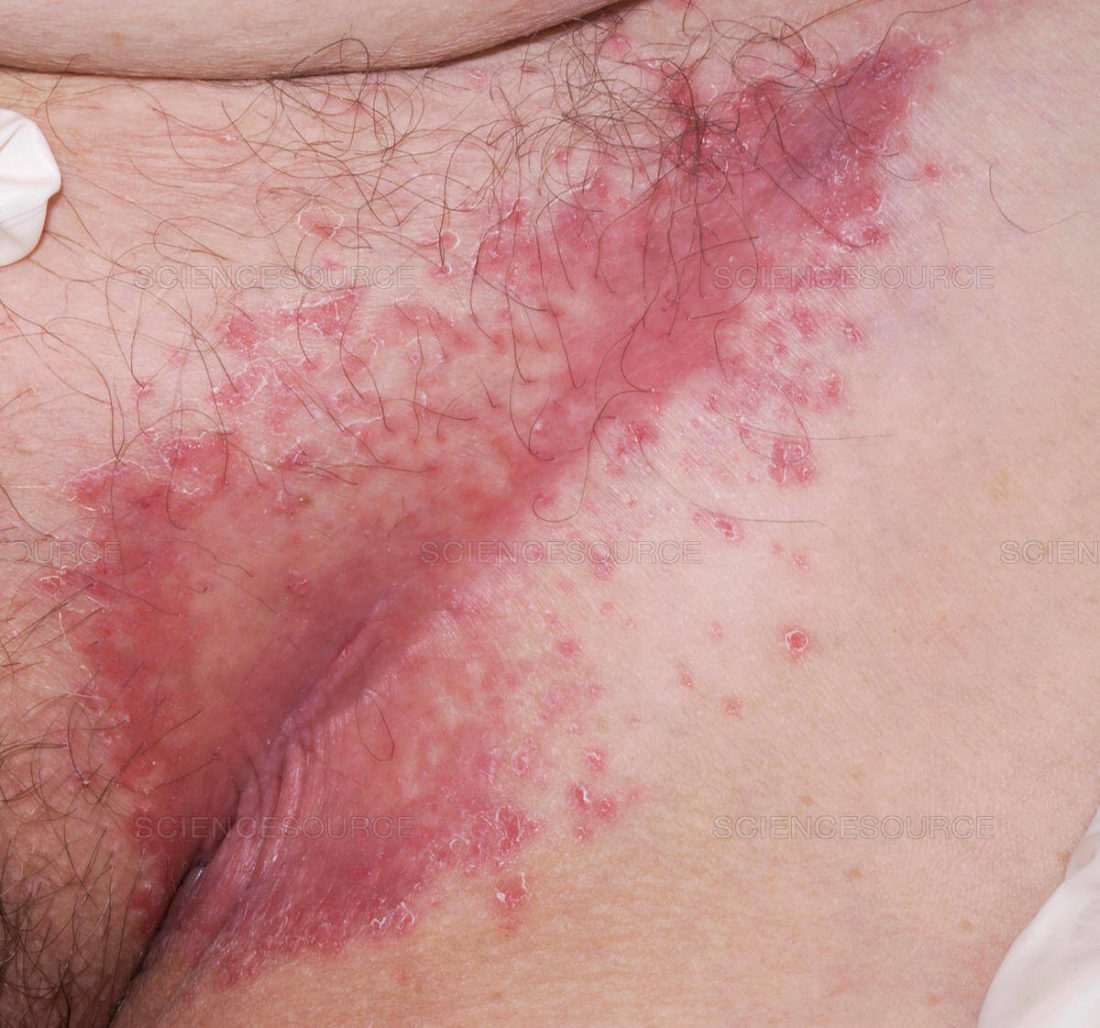Inverse psoriasis treatment is pretty much the same as for the other forms of psoriasis in the sense that treatment is mainly aimed at bringing relief from the symptoms of inverse psoriasis. The success of the initial treatment will determine if more intensive treatment is required.
Inverse psoriasis (aka flexural psoriasis) is one of 9 different types of psoriasis commonly identified and is often called a special form of plaque psoriasis.
It occurs mainly in the body’s skin folds such as under the breasts, in armpits, in the butt crack, and groin area. It is prone to inflammation, mostly chronic but not contagious.
In the early stages of inverse psoriasis, diagnosis is difficult, as it is often confused with other skin conditions such as dermatitis or bacterial infections.
In the more advanced stages of inverse psoriasis, unbearable itching and sore, aching bodies may be experienced.
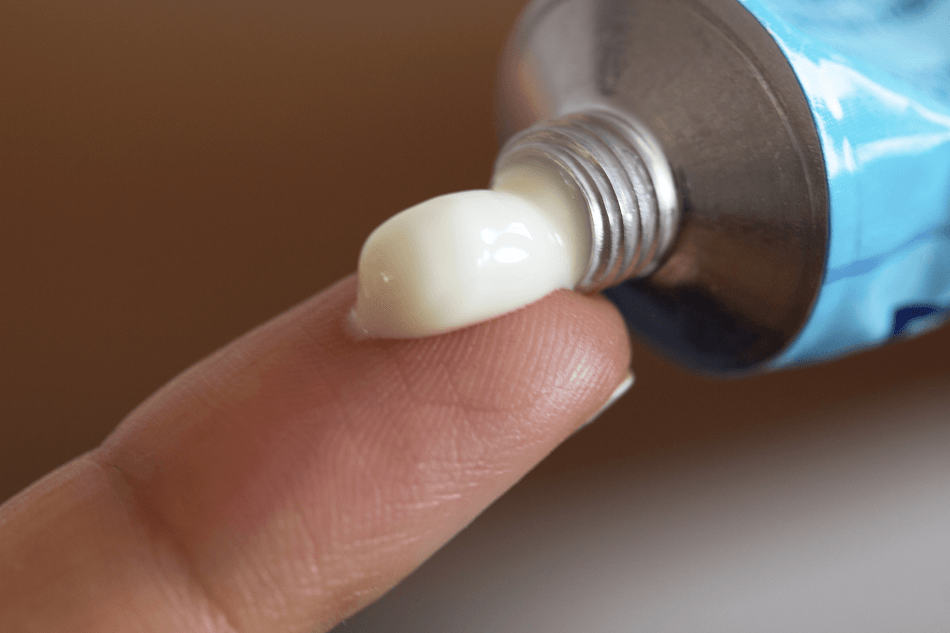
Page Contents
Prevalence of inverse psoriasis
Contrary to the most common form of psoriasis (psoriasis Vulgaris), which accounts for about 90% of all psoriatic cases, there is not all that much accurate data available for inverse psoriasis.
“According to different studies and populations, the prevalence of IP is highly variable, ranging from 3 to 36%, because of the lack of precise diagnostic criteria and of the consensus whether genital localization is considered part of the disease” Source
It is estimated that it occurs in between 3 to 7% of people already suffering from psoriasis.
Causes of inverse psoriasis
The causes are not fully explained. People with immune deficiency and genetic predisposition are at increased risk.
Various factors can play a role in causing the disease to break out.
These include psychological and physical stress, such as the death of a relative, the loss of a job, but also a harmless infection or a carious tooth can, with a corresponding predisposition, favor the outbreak of inverse psoriasis.
Certain drugs, such as many common drugs prescribed for high blood pressure can trigger this form of psoriasis.
In obese patients who already suffer from psoriasis Vulgaris, inverse psoriasis also occurs more commonly than in normal-weight people.
Psoriasis also tends to develop in warm moist areas such as the folds of the body. Factors such as continuous friction and infections with fungi and yeasts are also likely to contribute to the development of inverse psoriasis.
Below are inverse psoriasis groin pictures:
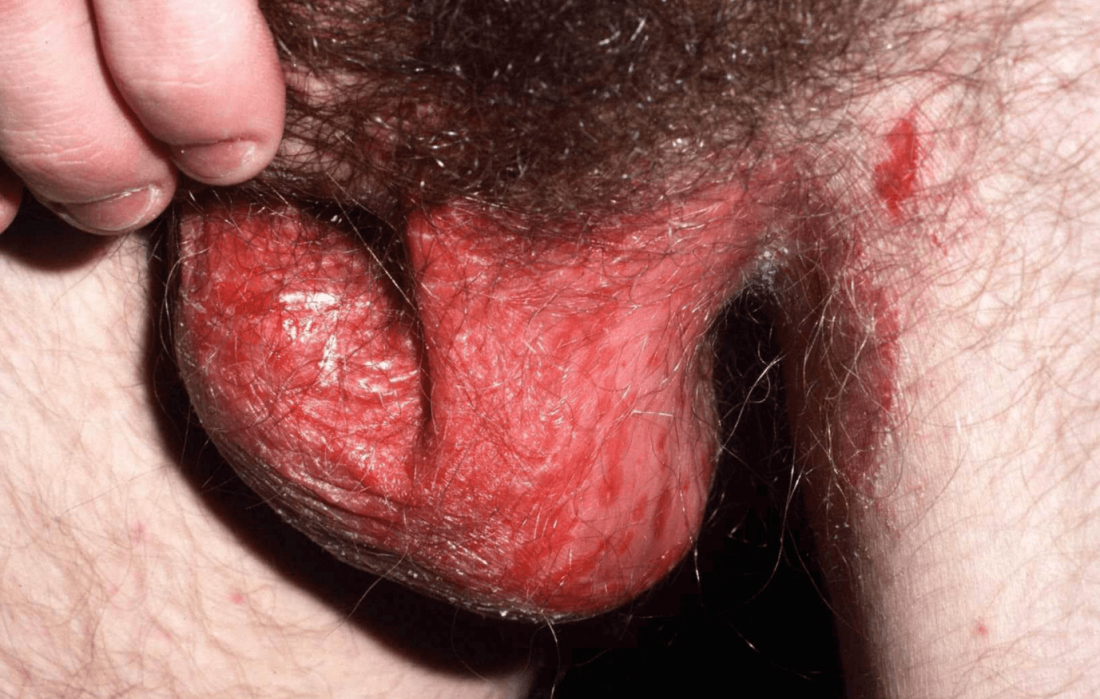
Symptoms of inverse psoriasis
Inverse psoriasis shows up in the body folds as mentioned before.
You can usually see bright red, shiny, and smooth patches on the affected skin.
In contrast to psoriasis Vulgaris, the characteristic scaling is greatly absent because of the moisture in the skin folds.
In serious cases, the cracks in the skin folds may bleed and subsequently cause a lot of pain. Itching is another complaint that sufferers have to deal with.
In milder forms of inverse psoriasis, there are often no complaints in the early stages.
Diagnosis of inverse psoriasis
Since classical scaling associated with psoriasis is often missing in inverse psoriasis, diagnosing it may be difficult.
If the first sign such as itching appears in the anal or genital area, many people affected do not go to the doctor out of shame.
When an examination is done, inverse psoriasis is often mistaken for eczema or a yeast infection. In fact, the moist environment in which the disease spreads also provides an ideal breeding ground for yeast fungi to grow. In this case, two different diseases have to be treated.
A precise history and histological findings are therefore essential for the diagnosis of inverse psoriasis.
The list of medications the patient is taking on a regular basis must be checked by a specialist. If a drug proves to be the trigger for the disease, the doctor will prescribe a different drug.
Pictures of inverse psoriasis as found in the armpits, and in the butt crack:
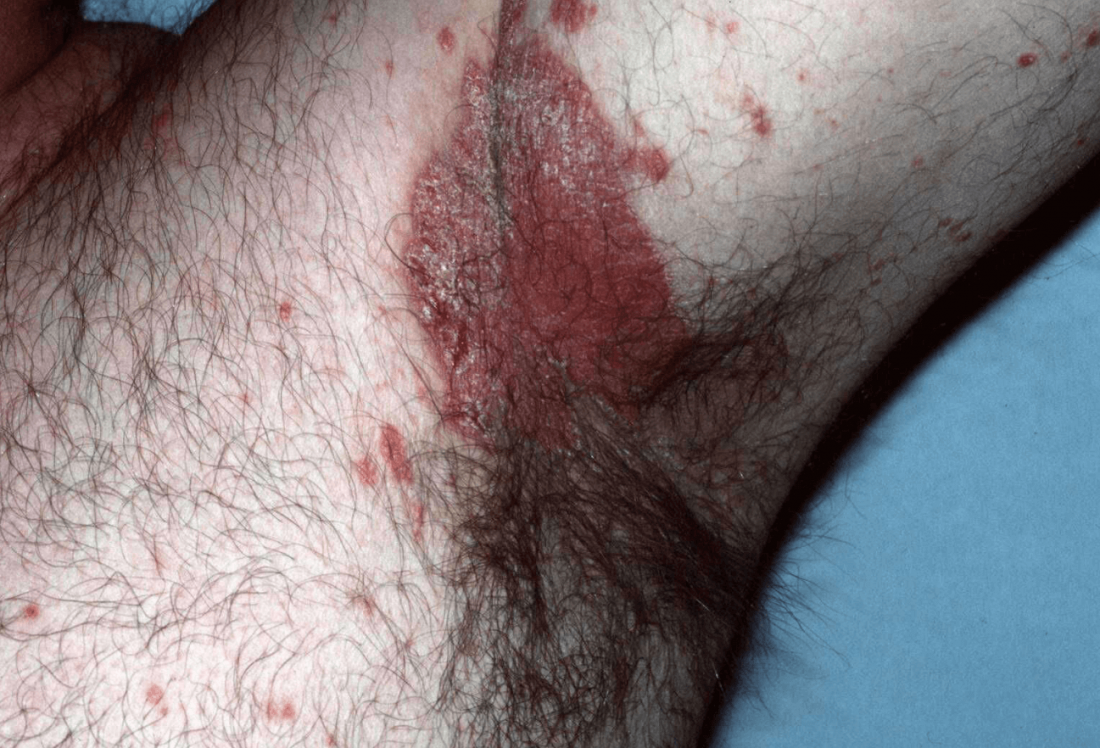
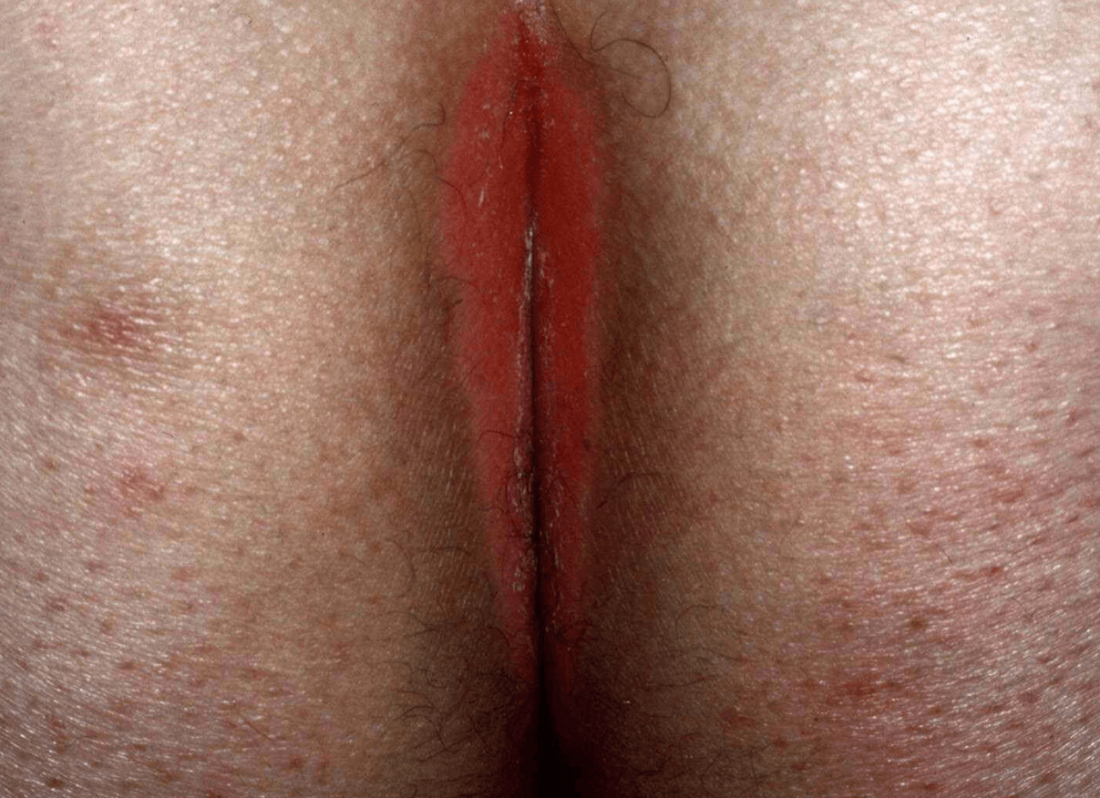
Inverse Psoriasis Treatment
Treating inverse psoriasis
People sometimes confuse this skin condition with a fungal infection or an allergic reaction to something else.
It is advisable to visit a doctor or dermatologist especially if you have a skin rash in a body fold that does not heal.
Dermatologists specialize in the diagnosis and treatment of skin diseases.
Can Inverse Psoriasis Be Cured?
Inverse psoriasis treatment mainly focuses on symptom relief as inverse psoriasis, just like guttate psoriasis will never completely go away. Even after successful treatment, it can flare up at any time.
Once the medical professionals have diagnosed your skin condition as inverse psoriasis, they will discuss the various inverse psoriasis treatment options available with you and then decide which one is best suited to your situation.
How to Treat Inverse Psoriasis
Options for treating inverse psoriasis most commonly include, but are not limited to:
1. Creams and ointments
Corticosteroids. Topical steroids are often the treatment of choice. These topical treatments are available in a variety of formulations such as creams, ointments, gels, lotions, foams, oils, and sprays.
Corticosteroids are very effective in calming the inflammation brought on by psoriasis. This results in less irritation and discomfort from the itchiness.
It is imperative you apply these steroids as prescribed by your doctor. Prolonged use of corticosteroids can cause the skin to get thinner and more sensitive. This is especially true in skin folds where the skin is already more sensitive when compared to other areas of the body.
Vitamin D ointment/cream. Calcipotriene is the generic name of Dovonex cream and is available in cream, ointment, and foam formulations.
Always apply as directed by your medical professional. It is generally applied twice daily.
This inverse psoriasis treatment reduces inflammation and slows the growth of new skin cells.
Topical Calcineurin Inhibitors (TCIs). Tacrolimus (Protopic) ointment and Pimecrolimus (Elidel) cream.
These are typically used to treat eczema but were found to also work well when treating psoriasis.
The inhibitors change the skin’s immunity system to prevent it from producing substances that may bring about skin diseases.
NOTE: This is NOT recommended for any person with a weakened immune system.
Castellani’s paint contains resorcinol, boric acid, and phenol, all of which have antifungal properties. Also known as Castederm, available on prescription or OTC, comes in a liquid form that is painted onto the lesions in the skin folds to dry them out.
Coal tar is a keratolytic drug. It is a soothing agent available in gel, liquid, and ointment form. For relief from symptoms, the liquid may be added to your bathwater.
“It works by causing the skin to shed dead cells from its top layer and slow down the growth of skin cells. This effect decreases scaling and dryness. Coal tar can also decrease itchiness from these skin conditions.” Source
2. Ultraviolet Light therapy (phototherapy)
Light therapy is mainly used for severe forms of inverse psoriasis but works on other types of psoriasis also.
Narrow-band UVB phototherapy is used to treat psoriasis and is always done under the supervision of a medical practitioner.
Skin is exposed to artificial UVB rays produced by a phototherapy unit. The treatment seems to be most effective with 2-3 sessions each week.
UV lights inhibit cell growth and reduce skin inflammation.
3. Systemic medications (affects the whole body)
When topical medications and light therapy are found to be ineffective in treating inverse psoriasis, your doctor may prescribe systemic medications.
Systemic medications are taken orally and work on the whole body. The different types of systemic drugs are:
Retinoids such as Soriatane (Acitretin) and Etretinate-oral (Tegison)
Methotrexate (binds to and inhibits an enzyme involved in the rapid growth of skin cells and slows down their growth rate)
Cyclosporine (suppresses the immune system and slows down the growth of certain immune cells)
Off-Label systemic medicines (“off-label” means these medicines are not FDA approved). These are only prescribed by medical practitioners when FDA-approved medicines failed to work or have stopped working for a condition.
Off-label medicines used to treat severe psoriasis are 6-thioguanine, Azathioprine, Fumaric, Hydroxyurea, Leflunomide, Mycophenolate mofetil, Sulfasalazine, and Tacrolimus.
4. Inverse Psoriasis Treatment: Biologics
“Rather than treating existing plaques (as topical therapies do), biologics get to the root of psoriasis by blocking the inflammatory process in your body before it even starts. Unlike traditional systemic therapies, which broadly suppress the immune system, biologics target specific molecules linked to psoriasis.” Source
These drugs are made from living organisms.
They are administered either by injection or infusion.
Currently, there are 11 biologics available to treat psoriasis. These are:
TNF-alpha inhibitors: infliximab (Remicade), adalimumab (Humira), etanercept (Enbrel), and certolizumab pegol (Cimzia)
IL-23 inhibitors: guselkumab (Tremfya), tildrakizumab (Ilumya), and risankizumab (Skyrizi)
IL-17 inhibitors: ixekizumab (Taltz), secukinumab (Cosentyx), and brodalumab (Siliq)
IL-12/23 inhibitor: ustekinumab (Stelara)
How to limit incidences of inverse psoriasis?
As with other types of psoriasis, there are inverse psoriasis triggers also that may be worthwhile taking note of:
Lose weight. Obesity plays a large role in inverse psoriasis. It is recommended to lose weight by adopting a healthier lifestyle.
Eat more fruits and vegetables. Healthy proteins such as lean meats and fish and less processed foods are recommended. Exercise more to assist your weight loss efforts.
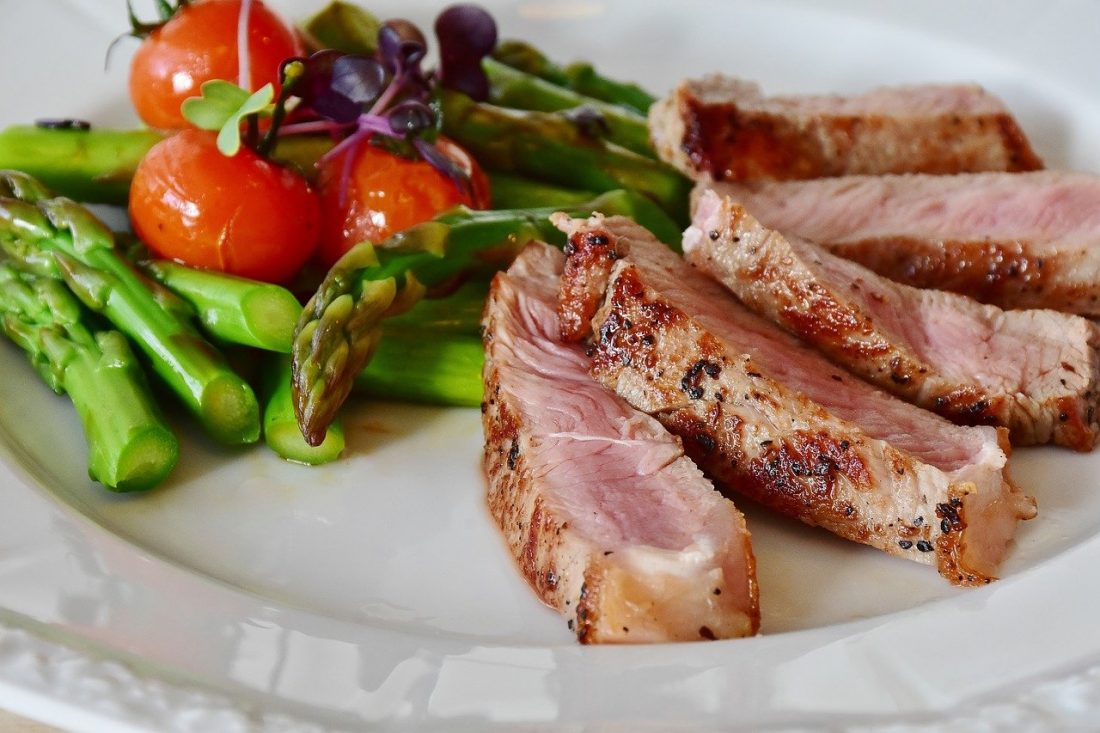
Reduce stress. Stress is one of the major factors related to the development of psoriasis. Set your mind on lowering your stress levels by engaging in relaxation techniques. Yoga, massage, or meditation are great ways to relax.
Quit smoking.
Consume alcohol in moderation.
Consider what you wear. Wear clothing made of soft fabrics like cotton or natural fibers so your skin can breathe. Refrain from wearing tight-fitting clothes as these can aggravate the condition by causing moisture to be trapped in the folds of your skin.
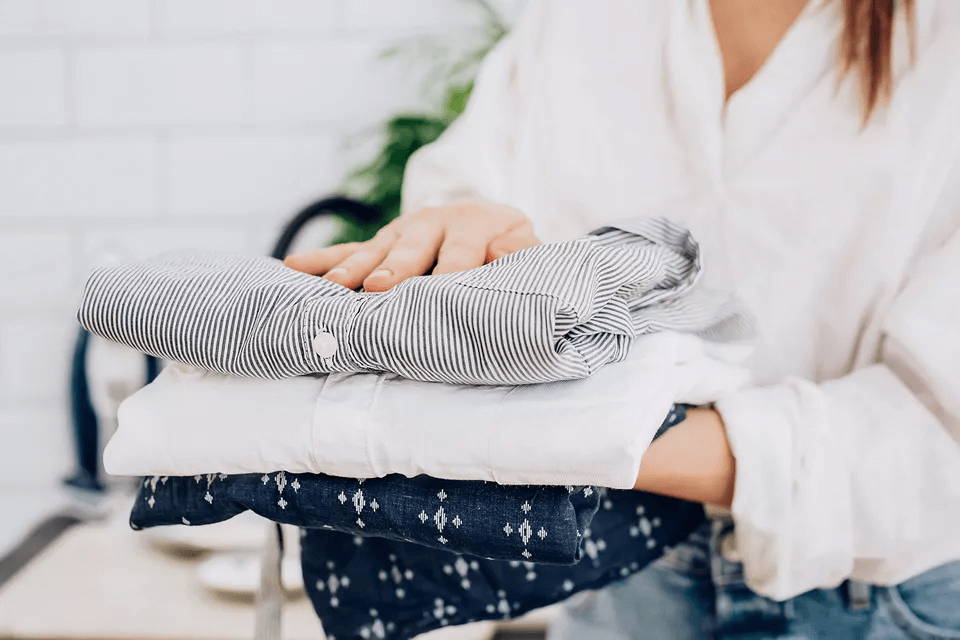
Conclusion
Inverse psoriasis patients are less exposed to the curious glances of their fellow human beings than other psoriasis sufferers because the affected areas are not immediately visible. The extent of their suffering is, however, often underestimated.
Especially when the disease manifests in the genital area, those affected try to hide it and remain silent out of shame. Interpersonal relationships in the area of sexuality are impaired.
